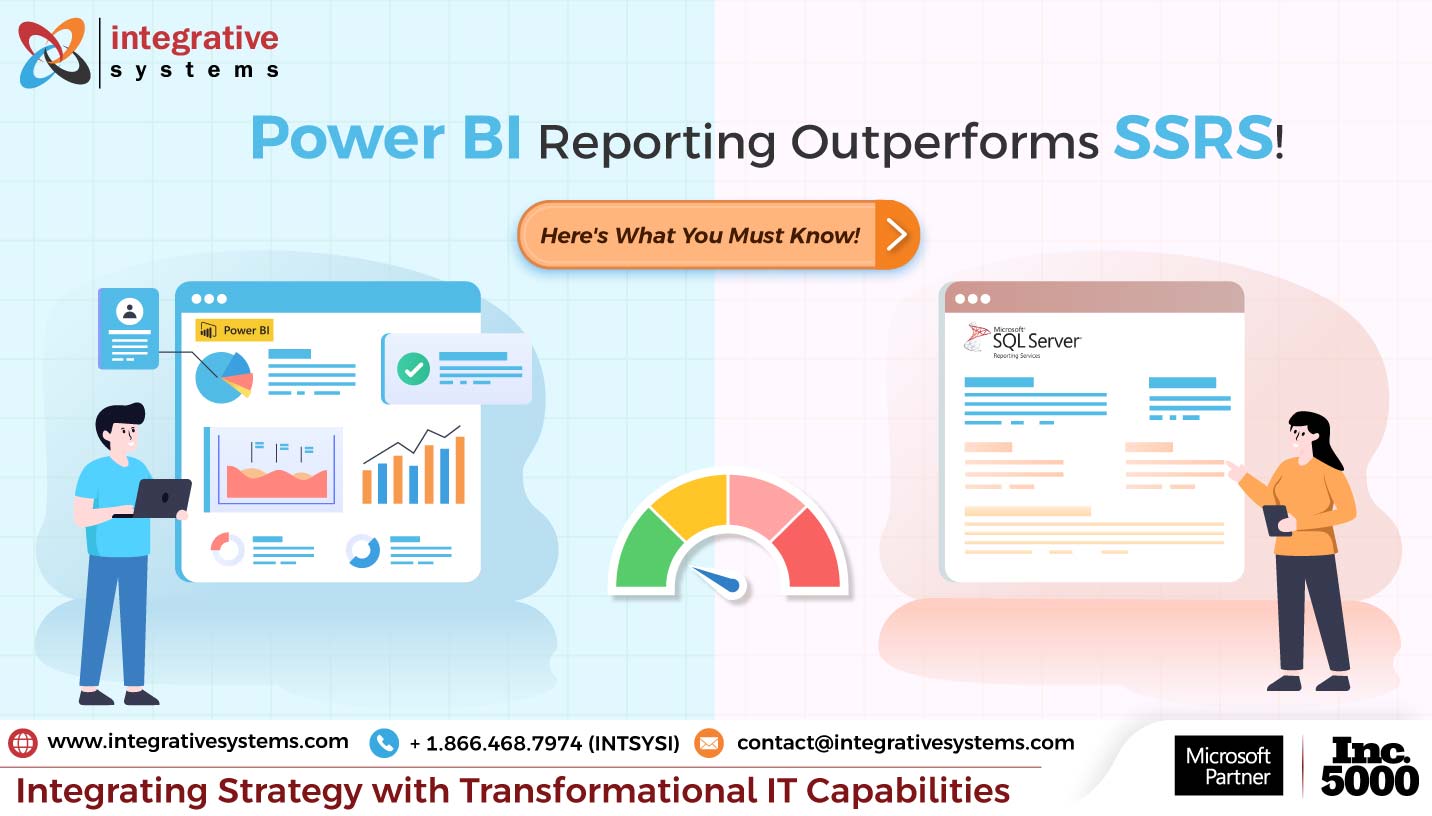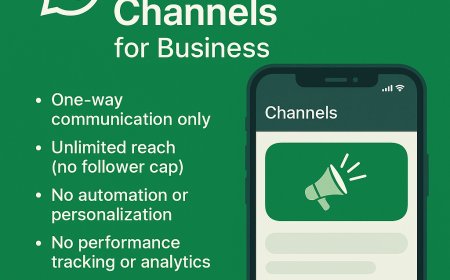SSRS vs Power BI – What fits Your Reporting Needs?

Today, were going to compare MicrosoftSSRS vs Power BI.
Wondering,Aint they both a part of Microsofts ecosystem?
Youre right!
You may be confused since both tools are a vital part of Microsofts BI stack.
Hold your horses for a moment.
They are meant for different sets of audiences and are dedicated to different BI practices.
And were here to explore just that.
Reading this guide till the end will offer you clarity.
Clarity to pick the right tool for your data visualization and reporting needs.
So why wait?
Lets get going to uncover
- What is Power BI? And what is Microsoft SSRS?
- SSRS vs Power BI Feature Comparison
- Which is a better reporting tool Power BI or SSRS?
- With a bonus insight into Power BI Reporting Server
Ready to explore, comprehend, and decide?
Lets get going.
Before digging into the comparison of Power BI vs SSRS lets take a glance at what these reporting tools are about.
What is Power BI?
Microsoft Power BIis a data visualization and reporting platform introduced in 2015.
The tech-driven, cloud-based platform is dedicated to analyzing raw information to present actionable insights, and drive data-driven decision-making.
What sets Power BI apart from the table-toppers is its user-friendly and smart features. Its features facilitate real-time data access and collective analytics, with robust security measures.
This enables businesses, large and small to avail of state-of-the-art business intelligence at flexible pricing.
Next in the debate of SSRS vs Power BI, its time to throw spotlight on the next contender, MS SQL Server Reporting Services.
What is SQL Server Reporting Services (SSRS)?
Microsoft SQL Server Reporting Services, popularly known as SSRS, is a server-based business intelligence platform to generate paginated reports.
It comes free with SQL Server 2012.
What sets SSRS apart in the business intelligence market is its capability to create conventional, paginated reports, which are primary for businesses with structured reporting needs.
To better understand the Power BI vs SSRS comparison, its crucial to understand the unique purpose they serve.
Moving on, lets take sneak a peek into the distinctive purposes ofSQL Server Reporting Servicesand Power BI.
What is the Purpose of Power BI?
The purpose of Power BI is to enable businesses of all sizes with distinct budgets, to turn their unrelated data sources into visually appealing, and interactive insights.
Whether your data is in a spreadsheet, on the cloud, on-premises, or a mix of both; Power BI seamlessly integrates and consolidates it to generate visually appealing reports and dashboards.
This empowers your users to conduct comprehensive data analysis, create effective visualizations, and collaborate effortlessly across the teams, anytime & anywhere.
In the debate of SSRS vs Power BI, its time to understand the distinct purpose of SSRS.
What is the Purpose of SSRS?
The purpose of Microsoft SSRS is to facilitate easy creation of form reports in the formatted table manners in images, graphs, charts, and data forms.
SSRS best serves businesses that are not comfortable having their data in the cloud. Due to data sensitivity, data sovereignty, or compliance reasons.
Do you wonder,Whether Microsoft SSRS will be discontinued?
So far, SQL Server Reporting Services is an integral part of Microsofts BI suite.
We dont know what the future holds, so we dont know if Microsoft will deprecate SSRS in the future.
If youre looking for a BI tool with a promising future and Microsofts full support, Power BI is your best bet.
So far, you have got a basic idea of what SQL server reporting services and Power BI from the Microsoft BI stack are about.
Up next, well give you a proper view of their distinct features to help you make a better judgment.
Why Should You Choose Power BI over SSRS?
23,022 companies use Microsoft SQL Server reporting services.
108,859 companies use Microsoft Power BI for data visualization & reporting needs.
Power BI, with about 15.74% market share in the Business Intelligence market, competes with Tableau for the first spot.
~ As per Enlyft.
Power BI is the top choice when it comes to data visualization and reporting capabilities.
As we compare the reporting capabilities, Power BI and SQL Server reporting services both have a lot to offer.
Undeniably, both their applications and benefits differ from each other, prominently.
If we need to put this in a line
Power BI reporting services help you make data-driven decisions, faster, with advanced visualization features like intuitive dashboards, AI-powered insights, and advanced analytics.
Whereas SSRS is considered as a reliable reporting solution for paginated reports using structured data.
Lets take the SSRS vs Power BI comparison to the next level and understand why Power BI makes the top choice.
It Empowers Decision-Makers with Intuitive Visualizations
As a decision-maker, how would you like a 360-degree view of your data, while you make the most crucial decisions?
Power BI does just that!
With Power BI in reporting services, you get access to dynamic dashboards & reports that sync data from the sources in real time. These visualizations and reports can further be customized to help you make better decisions.
You dont need to rely solely on the technical teams to draw data insights. No matter if you are technical or non-technical Power BI and reporting services make it all easier for you.
Unlike static SSRS reports, you and your peers can build dynamic dashboards and reports with simple drag and drop mechanisms. You dont need extensive technical expertise to attain actionable insights.
It Enables Unified Reporting with Seamless Integration
Trust us, this is the best thing you could do today integrate MS SQL reporting services with Power BI.
Both SSRS and Power BI belong to Microsoft.
Power BI integrates seamlessly with diverse databases, third-party applications, and cloud platforms enabling unified reporting.
If you are relying on SSRS reports, dont think of replacing it rather integrate it with Power BI. Extend your reporting capabilities like never before.
Let SSRS reports be there for operational reporting.
And, leverage Power BI for predictive analytics, AI-driven actionable insights while making strategic decisions.
If Gets You Predictive Analytics with AI-Powered Insights
Unlike SSRS reports, Power BI allows you to see the future!
We need to agree that SSRS reports are exceptional when it comes to operational reporting. Period!
But, in dynamic environments like a Finance Company or a Marketing Firm prediction of future trends is indomitable.
Power BI is laced with impeccable features like AI-powered analytics and machine algorithms.
This enables you to
- Identify patterns
- Automate insight generation
- Spot inclining/declining trends
- Make proactive, data-led, informed decisions
Power BI empowers you to think ahead of time, stay competitive and agile.
It Enables Stakeholders to Collaborate & Access Data
Access the reports anytime, from anywhere, using any device.
This is a modern-day leverage that data-led decision makers prefer to use.
Power BI and reporting services support cloud connectivity. You and your peers can access the reports published on Power BI reporting service from anywhere on the back of the earth, with any device.
Whereas SSRS reports are hosted on on-premises servers and need on-premises network connectivity for accessing the reports.
Another leverage that Power BI offers is collaboration. Multiple stakeholders can view, comment, and analyze Power BI reports simultaneously.
Working towards building a rock-solid data culture at your company? Power BI got you!
It helps Scale Reporting While Saving Costs
Are your reporting needs unpredictable?
Are the reporting requirements fluctuating constantly?
Why not invest in a reporting solution that scales according to your reporting needs?
The best part? You could implement Power BI and reporting services without making drastic changes in your infrastructure cost savings!
SSRS reports arent discretionary they serve great on specific operational purposes.
But Power BI allows the leverage of adaptability ensuring your reporting demands are met, always.
Microsoft SSRS vs Power BI: Points of Disparity to Consider in 2024
Businesses whose CEOs make data-backed decisions are 77% more likely to achieve success. According to a Deloitte survey.
A robust BI tool in place takes the hassle out of gathering, analyzing, and interpreting raw data. This empowers CEOs and leaders, like yourself, to make data-driven decisions effortlessly and confidently.
Microsoft stands at the forefront of the data visualization and business intelligence industry.
Thus, comparing MS SSRS vs Power BI from Microsoft BI stack is both essential and insightful.
Lets understand the points of disparities to help you make the right choice.
SSRS vs Power BI: Nature of the BI Tool
Although SSRS shares common features with Power BI; it is conventional in terms of its nature.
It is used in organizations for data visualization. It is also used to produce, view, and share reports with precise formatting and layout.
Moreover, it has a programming and coding interface along with multiple processing components.
Power BI, on the other hand, is used by businesses for data visualization, analysis, reporting, and storytelling. Its rich GUI and drag-and-drop features enable the creation of dynamic and interactive dashboards and reports.
Microsoft SSRS vs Power BI: User Interface
Microsoft SSRS offers a straightforward interface. It is designed for creating structured and paginated reports with precise formatting and layout control.
The SSRS environment is more suitable for a technical audience.
Whereas Power BI has drag-and-drop functionality and intuitive interface. This makes it easy to design visually appealing reports and dashboards effortlessly.
The Power BI environment is ideal for users from all technical backgrounds.
This accessibility makes Power BI, the best choice, for businesses seeking a self-service BI tool with minimal investment.
However, to leverage the complete potential of Power BI, its ideal to partner with aPower BI consulting servicesprovider.
Power BI vs SSRS: Data Modeling and Transformation
SSRS primarily focuses on data presentation and formatting within the boundaries of structured, paginated reports. Thus, it has limited data modeling and transformation capabilities.
Power BIs data modeling and transformation capabilities are robust and user-friendly. It helps in deriving and transforming the data and loading it in the form of visuals.
Microsoft SSRS vs Power BI: SSRS Expressions vs DAX
You can use SSRS Expressions in SSRS and DAX in Power BI to generate dynamic reports.
SSRS expressions are straightforward. They are mainly used for dynamic report elements like parameters. You can also use DAX to build SSRS reports.
DAX in Power BI has extensive documentation and books, and it is applicable to Multidimensional Databases. Its very much like Excel functions, making it easier to understand and apply. DAX is a powerful language for data manipulation.
Comparing them is tough as DAX is used for querying and SSRS expressions are used for enhancing reports.
MS SSRS vs Power BI: Natural Language Queries
SSRS does not have this feature. It mainly focuses on data presentation and structured report generation.
Power BI, on the other hand, has Cortana integrated for AI-based natural language processing. It facilitates Q&A interactions with your data and reports directly within your Power BI environment.
Power BI vs SSRS Comparison: Mobile App
SSRS has SQL Server Mobile Report Publisher, but it was deprecated for all releases of SQL Server Reporting Services after SQL Server Reporting Services 2019.
It is discontinued starting in SQL Server Reporting Services 2022 andPower BI Report Server(an on-premises solution for reporting).
Power BI reports and dashboards can be easily accessed and shared by using the Power BI Mobile App. You can share the reports with either the entire organization or specific people or groups.
Plus, you need not create different reports for mobile access.
The Power BI Mobile App is available for free download from the Google Play Store (4.6 rating) and the Apple App Store (4.7 rating).
Power BI vs. SSRS: Learning Curve & User Training
SSRS is a stagnant software which adds up to its steep learning curve. Moreover, you need dedicated SQL Server engineers to ensure success.
On the other hand, Power BI has a shallow learning curve, due to its easy-to-use drag-and-drop features. Anybody can self-start their BI initiative withPower BI Desktop.
However, non-technical users may struggle to master its advanced features.
MS SSRS vs Power BI: AI & ML
SSRS has impressive graphical abilities, actions and drill-through, and complex filtering capabilities. But it doesnt have Artificial Intelligence and Machine Learning capabilities.
Conversely, Power BI has robust AI capabilities which you can use to gain access to a collection of pre-trained machine learning models.
MS SSRS vs Power BI: Pricing
SQL Server License is required to access MS SSRS.
Heres the price breakdown to access Power BI.
Power BI Desktop
Cost: Free
Power BI Pro
Cost: USD 10 per user/month
Cost: USD 20 per user/month (Free if you have Microsoft 365)
Power BI Premium (per-capacity)
Cost: USD 4995 Per Month for P1 SKU
Thinking? Power BI is indeed equipped with modern data visualization and reporting capabilities. But SSRS has its pluses, especially in conventional reporting and on-premises deployment.
Does it make your decision even more difficult?
Thinking if understanding Power BI vs SSRS pros and cons will help?
Lets get going to understand the SSRS vs Power BI pros and cons and take you closer to your decision.
SSRS vs Power BI Pros and Cons
Whether youre inclined towards Power BI or SSRS, exploring the pluses and minuses of both the reporting and BI tools will provide you with a clearer perspective.
Here you go.
Power BI Pros and Cons
| Power BI Pros | Power BI Cons |
| Shallow learning curve | Expensive to scale |
| Wide variety of customization | Unreasonable cost for Power BI Premium |
| Built-in machine learning features | Steep learning curve for advanced features |
| Seamless collaboration with Power BI Mobile App | Limited capabilities with the Power BI Desktop Free version |
| Ability to process voluminous data with Power BI Premium version | High reliability on the internet for real-time data visualization |
| Relatively affordable | Report sharing requires a Power BI Pro or Premium subscription |
SSRS Pros and Cons
| SSRS Pros | SSRS Cons |
| Reliable reporting | Microsoft updates SSRS only once every few years |
| Great drill-down capacity | Highly proficient SSRS developers are required |
| Flexibility to generate a variety of reports | Natural language queries not supported |
| Widespread usage despite old technology | Limited customization options |
| Centralized control and distribution of reports | Less user-friendly interface |
| Programming interface for precise customization | Limited mobile support |
| Familiar choice for organizations well-versed with traditional reporting | Basic access control |
This Power BI vs SSRS pros and cons is all you need to decode the SSRS vs Power BI battle for Microsoft BI supremacy.
Thinking What if I could blend both the tools from Microsofts BI stack? And leverage the strengths of Power BI within my on-premises environment?
Youre on the right track!
After decoding Power BI vs. SSRS, lets now unwind the double power of Power BI and SSRS Power BI Reporting Server.
Whats Power BI Reporting Server?
Power BI report server is an on-premises report server by Microsoft. It is used to host, manage, and display reports and KPIs.
It is built upon the SQL Server Reporting Services (SSRS) foundation. This means it inherits many features from SSRS such as report authoring, support for multiple data sources, ability to create pixel-perfect paginated reports.
For businesses, seeking to embrace the capabilities of SQL Server Reporting Services along with cloud-based analytics and modern data reporting Power BI Reporting Serveris the best solution.
So that was about the Microsoft SSRS vs Power BI for business leaders, who are looking to leverage the capabilities of business intelligence and data visualization from Microsofts BI stack.
Conclusion
As we come to the end of this insightful guide, were confident that you gained valuable insights into the MS SSRS vs Power BI comparison. And an answer to your prolonged question Which reporting tool better suits my data needs?
Now, what should be your next step?
Ideally, you should consult a Microsoft-Certified partner.
We, at Integrative Systems, bring in more than a decade of experience in helping decision-makers attain success with their data initiatives using Power BI.
If youre looking for a Microsoft-certified partner who prioritizes your success and specializes in Microsofts BI stack, look no further than Integrative Systems.
You can reach out to us at,contact@integrativesystems.comand our team of professionals will get back to you within 2 business days.






































